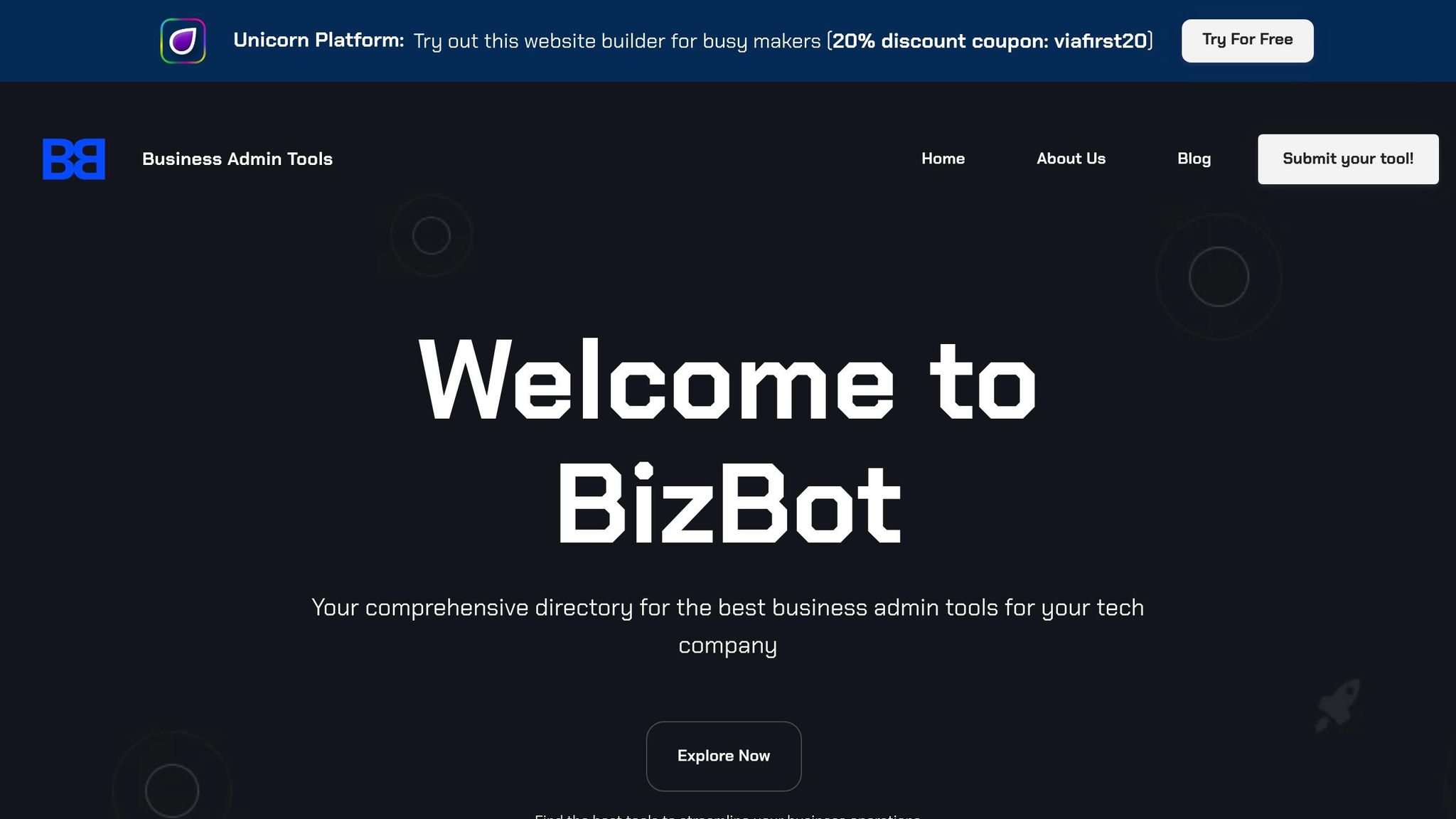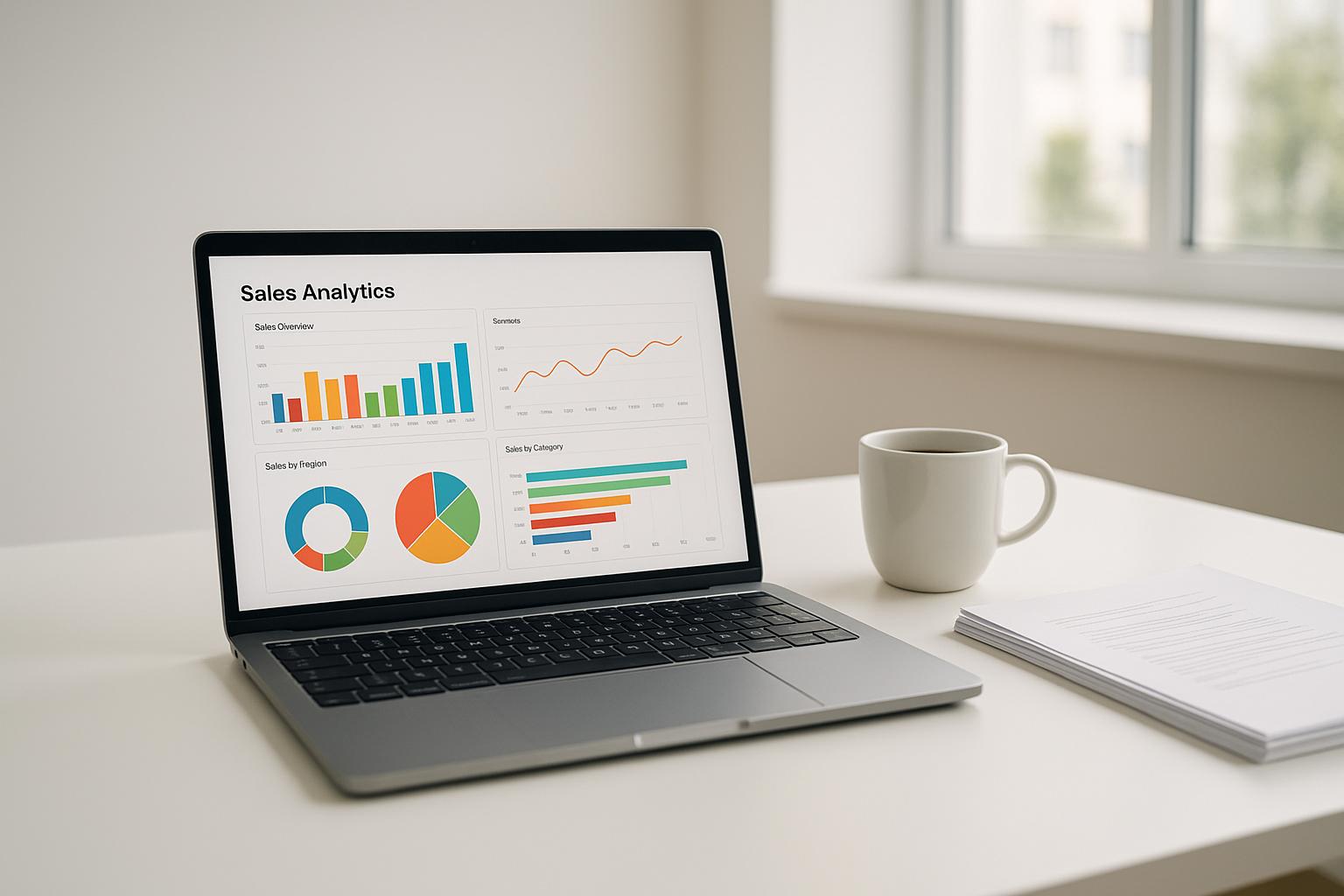Turning free users into paying customers is the core challenge for app-based businesses. Whether you're running a freemium model or offering free trials, the goal is to convert users efficiently while maintaining a balance between free offerings and paid value. Here's what you need to know:
- Freemium vs. Free Trial: Freemium attracts more users but has lower conversion rates (2–5%). Free trials, especially with upfront payment details, can convert 10–60% of users.
- Key Conversion Factors: Smooth onboarding, well-designed trials, user segmentation, and clear upgrade prompts are critical. Timing and urgency (e.g., hitting feature limits or milestones) play a huge role.
- Upgrade Strategies: Use in-app messages, push notifications, and email campaigns to target users at the right moments. Simplify payment processes with one-tap options and multiple payment methods.
- Data-Driven Insights: Tools like cohort analysis and predictive analytics help identify high-potential users, refine strategies, and optimize trial lengths or pricing.
Quick Tip: Focus on creating a seamless user experience, show value early, and track data to refine your approach. The right strategy can turn a small percentage of free users into a sustainable revenue stream.
increase FREE TRIAL TO PAID conversion rate in 18 minutes (mobile apps, saas, cro)
Free-to-Paid Conversion Models Explained
When it comes to app revenue, selecting the right conversion model can make all the difference. Each model comes with its own strengths, challenges, and ideal use cases.
Freemium vs. Free Trial: What's the Difference
The freemium model offers a free version of the product with limited features, allowing users to build habits and see the value over time. On the other hand, a free trial provides full access to all features for a limited period, encouraging users to evaluate the app quickly.
Freemium models are great for attracting a large number of users because they’re low-friction - anyone can sign up without commitment. However, conversion rates tend to be modest, typically around 2–5%. Free trials, by contrast, attract users with high intent, resulting in better conversion rates of 10–15%, and even 30–60% if payment details are collected upfront.
| Model | User Volume | Conversion Rate | Best For |
|---|---|---|---|
| Freemium | High volume, low friction | 2–5% typically | Apps where value builds gradually over time |
| Free Trial | Lower volume, high intent | 10–15% standard; 30–60% upfront | Feature-rich apps with immediate value |
Once you’ve chosen a model, the next step is understanding how to measure its effectiveness. That’s where conversion rate calculations come in.
How to Calculate Conversion Rates
Calculating conversion rates is simple and essential for evaluating how well your chosen model is performing. Use this formula:
Conversion Rate = (Number of Paying Customers ÷ Total Number of Free Users) × 100
For example, if 250 users convert to paying customers out of 10,000 free users, the conversion rate is 2.5%.
Timing plays a big role in these calculations. In freemium models, conversions may happen over longer periods - 30 days, 90 days, or even a year. For free trials, the conversion rate is typically measured at the end of the trial period.
To dig deeper, use cohort analysis. This method helps you identify trends, such as which acquisition channels or timeframes bring in the most high-converting users. It’s also smart to track "qualified conversions" by filtering out users who never actively engaged with your app.
What Affects Conversion Rates
Conversion rates are influenced by more than just raw numbers. Here are some key factors to consider:
- User experience and onboarding: If users can’t quickly understand your app’s value, they’re less likely to stick around. A smooth onboarding process can significantly boost conversions.
- Trial design and feature access: Striking the right balance is crucial. If your free version is too limited, users won’t see the app’s value. But if it’s too generous, there’s no urgency to upgrade.
- Product-market fit: When your app solves a real problem, users are more willing to pay for it.
- Timing and urgency: Free trials that require payment details upfront often see conversion rates jump to 30%, and sometimes even 50–60%.
- User segmentation: Not all users are equal. Power users - those who engage deeply during the free period - are far more likely to convert than casual users.
- Infrastructure and costs: Supporting a free tier can be expensive. If maintenance costs are high, you may need stronger conversion rates to ensure long-term sustainability, which could affect how you structure your free offering.
User Onboarding and Activation Best Practices
The first few moments after someone downloads your app are make-or-break. A well-thought-out onboarding process not only shows users the value of your app but also sets the stage for conversions.
How to Personalize the Onboarding Process
A one-size-fits-all onboarding approach just doesn’t cut it. Instead, tailor the experience to meet each user's unique needs. Start by asking a few smart questions during the signup process to understand their goals and preferences. This way, instead of overwhelming them with every feature, you can guide them toward the ones that matter most.
For instance, a productivity app could ask whether the user is a student, a professional, or a team leader. Similarly, a fitness app might inquire about their current activity level and fitness goals. These initial responses can then shape the onboarding flow. A beginner might benefit from more educational content and guided tutorials, while an experienced user might prefer quick access to advanced tools and shortcuts.
Behavioral triggers can refine this even further. For example, users exploring the app settings might appreciate learning about customization options, while those diving straight into the core features might benefit from action-focused guidance. By making the experience feel tailored and relevant, you’re setting the stage for deeper engagement.
Feature Discovery and Activation Checklists
Once you’ve personalized the onboarding process, the next step is helping users discover your app’s core features. This is where activation checklists come into play. These checklists guide users through essential actions that highlight the app’s value and encourage long-term engagement.
What counts as an “activation” action depends on the type of app. For example, a project management app might encourage users to create their first project, invite team members, and add tasks. The key is to focus on a few specific, actionable tasks that are easy to complete and directly tied to the app’s purpose. Instead of vague instructions like “Explore features,” use clear, goal-oriented prompts like “Set up your first project in under 2 minutes.”
Visual progress indicators - like completion bars or percentages - can make the process feel more achievable, while celebratory moments (think animations or badges) when tasks are completed add a sense of accomplishment. Gamification elements like points or rewards can also help, but the main goal should always be delivering real, tangible value.
Static tutorials often fall flat because they frontload too much information. Instead, offer contextual guidance - tooltips, overlays, or inline hints that appear exactly when and where users need them. Adaptive checklists can also adjust based on user behavior, suggesting advanced features for quick learners or offering extra support for those who seem stuck.
User Segmentation for High-Potential Customers
Not every free user will convert to a paying customer, and that’s okay. The key is identifying those with the highest potential and focusing your resources on them.
Behavioral segmentation is a powerful way to do this. By tracking engagement, you can assign scores to different actions - routine tasks might earn a low score, while advanced interactions are worth more. Users who reach a certain score threshold can then be targeted with upgrade campaigns.
Patterns in usage can also reveal valuable insights. For example, power users who frequently hit feature limits are often strong candidates for upgrades. Meanwhile, consistent moderate users might convert with the right incentive. Additionally, users who share your app with others or invite teammates tend to have higher lifetime value and are worth prioritizing.
But segmentation isn’t just about identifying high-potential users - it’s about acting on that information. Target these users with personalized email campaigns, in-app upgrade prompts, or even limited-time previews of premium features. For users with lower conversion potential, focus on building engagement first with educational content and nurturing campaigns. Timing is everything here. Users who show strong engagement early on are more likely to respond to upgrade offers, while slower adopters may need more time and encouragement to see the app’s value.
Upgrade Strategies and Payment Process Tips
Upgrading isn’t just about asking users for money. It’s about timing, smart messaging, and making the payment process as easy as possible. By focusing on the value your app delivers and removing obstacles in the payment flow, you can encourage users to take that next step.
When to Show Upgrade Prompts
Once onboarding and activation are in good shape, it’s time to focus on well-timed upgrade prompts. The best moments to show these prompts are during key friction points or when users hit important milestones.
For example, when users hit feature limits - like running out of storage, reaching a usage cap, or trying to access premium tools - they’re already seeing the app’s value and what they’re missing out on. Offering an upgrade at this point feels natural and relevant, not pushy.
Milestones are another great opportunity. Whether it’s completing a project, maintaining a streak, or reaching a goal, these moments of success make users more open to hearing about upgrades. Start by celebrating their achievement, then introduce the upgrade as a way to unlock even more possibilities.
Natural pause points also work well. Think about when users save a document, finish a workout, or complete a level in a game. Begin with subtle hints about premium features, and for users who keep engaging, follow up with more direct prompts.
Multi-Channel Communication for Upgrades
To maximize upgrade opportunities, your messaging should reach users across multiple channels. People interact with your app at different times and in different ways, so meeting them where they are is key - especially for engaged users who are likely to convert.
- In-app messages: These are perfect for immediate, contextual upgrades. Keep them short, focused on benefits, and easy to dismiss if the user isn’t interested. Tie the message directly to what they’re doing at that moment.
- Push notifications: These can bring back users who haven’t opened your app in a while, but they need to offer real value. Instead of a generic sales pitch, share updates about new features, personalized tips, or usage insights. If you include upgrade messaging, frame it as helpful information rather than an ad.
- Email campaigns: Emails let you dive deeper into premium features and their benefits. They’re especially effective for users who’ve shown interest but haven’t upgraded yet. Use behavioral triggers - like hitting feature limits or exploring premium sections - to automate these emails and make them more relevant.
The trick is to coordinate these channels so they complement each other. For instance, a user might see an in-app hint about a premium feature, get a push notification about a special discount, and later receive an email with a detailed feature comparison. Together, these create a compelling case for upgrading without feeling repetitive.
Making Payment Processes Simple
Even with great upgrade strategies, a clunky payment process can ruin everything. A smooth checkout experience is essential to avoid losing potential upgrades.
One-tap payment options like Apple Pay and Google Pay are a must for U.S. users. They eliminate the hassle of entering credit card details and billing addresses, letting users complete purchases with just a fingerprint or face scan. It’s quick, easy, and feels effortless.
Offering a variety of payment methods is also important. While credit cards are still popular, many users prefer PayPal, digital wallets, or even carrier billing for mobile purchases. Providing multiple options ensures you don’t lose a sale because of limited payment choices.
Transparency is key - display full pricing upfront. If you offer subscription tiers, make the differences crystal clear with simple comparison charts that highlight the value of each plan.
Keep the checkout process short and sweet. Auto-fill known information like email addresses, minimize required fields, and use smart defaults for subscription terms. If account creation is necessary, consider allowing social logins or letting users complete their purchase first and set up an account afterward.
Lastly, handle errors gracefully. Don’t just show a generic “payment failed” message. Offer clear explanations and next steps, like suggesting an alternative payment method or contacting their bank if their card is declined. A little clarity can go a long way in keeping users on track.
sbb-itb-d1a6c90
How to Structure Trials and Offers
The way you set up trial periods and promotional offers can make a big difference in turning free users into paying customers. It’s all about striking the right balance - giving users enough time to see the value of your app while offering compelling reasons to upgrade. Let’s dive into how trial length, urgency tactics, and trial models can be structured to boost conversions.
Trial Length and Format Options
The length of your trial period plays a key role in how effectively you convert users. For apps that deliver immediate value - like productivity tools or entertainment platforms - a short trial of 7 to 14 days often works best. It gives users just enough time to experience the benefits without dragging things out. On the other hand, more complex software that requires integration or a learning curve may benefit from longer trials, such as 30 days or more, to give users the chance to fully explore the app’s potential.
When it comes to trial formats, there are two main options:
- Opt-in trials: These require users to provide payment details upfront. This approach tends to attract more serious users who are already considering a purchase, leading to higher conversion rates.
- Opt-out trials: These start automatically when users sign up, without requiring payment details right away. While this method can bring in a larger number of trial users, the overall conversion rate may be lower since many users might not have strong purchase intentions.
Choosing the right format depends on your app’s audience and goals. Opt-in trials are great for filtering out casual users, while opt-out trials can work well for building a larger user base quickly.
Creating Urgency with Limited-Time Offers
Adding a sense of urgency to your offers can be a game-changer for conversions. Limited-time promotions create a feeling of scarcity, encouraging users to act quickly instead of postponing their decision.
One proven tactic is using countdown timers. For example, Cracku, an exam preparation platform, saw a 300% increase in conversions after adding countdown timers to their upgrade pages. Similarly, emphasizing scarcity in sales messaging can boost conversions by up to 300%. But it’s crucial to keep urgency genuine - false urgency can erode trust and hurt future campaigns.
Impulse buying is another factor to consider. Research shows that 54% of U.S. shoppers have spent $100 or more on an impulse purchase. For app subscriptions, this means users are more likely to upgrade during promotional periods rather than delaying their decision.
Timing also matters. Studies show that 41% of online shoppers prefer making purchases in the afternoon (12 PM to 6 PM), while 36% lean toward evenings (6 PM to midnight). Additionally, emails sent at 10 AM in the recipient’s local time tend to have the highest open rates. Scheduling your campaigns around these timeframes can improve visibility and response rates.
To maximize conversions, layer urgency throughout your campaign. For example, combine trial expiration reminders with limited-time discounts, exclusive features, or bonus content. This creates multiple touchpoints to engage users and nudge them toward upgrading.
Choosing the Right Trial Model
Picking the right trial model depends on your app’s complexity and the behavior of your target audience. Opt-in trials are ideal if your goal is to attract highly committed users, while opt-out trials work well for casting a wider net. Ultimately, your choice should align with your broader acquisition strategy and budget considerations.
Subscription Management and Business Tools
Once you've set up trial structures and planned your conversion strategies, the next step is implementing tools to manage and refine your subscription processes. Keeping an eye on subscription metrics and using data-driven decisions can make a big difference in how successful your app becomes.
Using Subscription Management Platforms
Subscription management platforms are essential for fine-tuning your conversion funnel. These tools handle tasks like billing, payment processing, and tracking user engagement automatically. Without them, it’s tough to pinpoint what drives your conversions - or what might be holding them back.
Here’s what these platforms bring to the table:
- Automated billing: Streamline payment collection and reduce manual errors.
- Revenue insights: Access detailed analytics to understand your income streams.
- Promotional management: Easily create and manage offers to attract new users.
One of their standout features is real-time monitoring of key metrics, which provides actionable insights. For example, you can test different trial lengths or pricing strategies and quickly see what works. Many platforms also help tackle payment-related issues, reducing involuntary churn - when users drop off due to failed payments - so your hard-earned conversions don’t slip through the cracks.
BizBot for Business Management

While subscription platforms focus on billing and revenue, managing a growing app requires tools that cover the bigger picture - things like accounting, legal compliance, HR, and other operational needs.
That’s where solutions like BizBot come in. BizBot offers a curated directory of business tools designed to simplify operations, so you can focus on improving conversions. Their platform covers a wide range of categories, including:
- Accounting software
- Banking services
- HR tools
- Board management and shareholder registers
BizBot is big on simplicity, making it possible to manage complex tasks without needing a large administrative team. It’s a one-stop shop for reducing operational headaches while keeping your business running smoothly.
Improving Conversions Through Analytics
Subscription management tools become even more powerful when paired with app analytics. Together, they give you a full picture of the user journey, from the moment someone downloads your app to when they become a paying subscriber.
For example, cohort analysis helps you track user groups that start trials at the same time. This can reveal how different trial lengths, onboarding processes, or promotional offers affect conversion rates. Revenue attribution is another game-changer - it lets you link income to specific marketing channels, so you can focus your budget on what actually works.
Predictive analytics takes things a step further. By analyzing user behavior - like feature usage, session frequency, or engagement patterns - you can identify users who are likely to convert before their trial ends. With this insight, you can send targeted campaigns that encourage these high-potential users to upgrade.
Other key events to track include completed onboarding, premium feature usage, or responses to upgrade prompts. Automating personalized messages based on these triggers can make your upgrade nudges feel more relevant and effective.
Key Takeaways for Free-to-Paid Conversions
Turning free users into paying customers isn't about a single magic trick - it’s about creating a well-rounded, data-informed strategy that works across every stage of the user journey. The best-performing apps build systems where users naturally progress toward subscription, rather than feeling pressured.
User experience is the foundation of conversions. A smooth onboarding process that quickly highlights value is essential. Personalization is key here - tools like feature activation checklists and user segmentation help you spot potential paying customers early, allowing you to tailor their experience. Make sure your premium features clearly address users' needs and solve their problems.
Timing is everything for upgrade prompts. Push too early, and you risk annoying users before they see your app's value. The right moment often comes down to analyzing user behavior - like how often they use key features or their engagement patterns. These insights help you identify when someone is most likely to say yes.
Your trial structure can make or break conversions. The length of your free trial should match your app’s complexity. Adding urgency, such as limited-time offers, can encourage upgrades, but it’s important these offers feel genuine and beneficial - not like a hard sell.
Operational tools can supercharge your efforts. Subscription management platforms simplify billing, payments, and revenue tracking. Tools like BizBot can also handle the administrative challenges that come with scaling, freeing you up to focus on the user experience.
Data-driven insights replace guesswork. Use cohort analysis to find out which user groups are most likely to convert, and rely on revenue attribution to pinpoint the marketing channels that actually bring in paying customers. Predictive analytics can help you craft campaigns that hit the right audience at the right time.
The apps that consistently see high conversion rates understand that free-to-paid optimization is a continuous process. They experiment, measure, and adapt based on real user data. This ongoing commitment not only drives revenue growth but also builds a loyal customer base that truly values what you offer.
FAQs
How can I identify users who are most likely to upgrade from free to paid subscriptions?
To pinpoint users most likely to upgrade, start by examining user behavior and engagement patterns. Pay attention to those who frequently use key features, spend considerable time in the app, or return consistently over time. Running cohort analyses can be particularly useful here - by comparing the behaviors of users who upgrade versus those who don’t, you can uncover trends and traits that signal high conversion potential.
Another valuable metric to track is Product Qualified Leads (PQLs). These are users who actively engage with your product and show clear interest in premium features. Understanding these behaviors allows you to focus your efforts on the right audience and craft strategies that encourage upgrades effectively.
How can I design my app's onboarding process to showcase premium features and drive more free-to-paid conversions?
When guiding users from free to paid versions of your app, the onboarding process plays a crucial role. Right from the beginning, it’s important to show how premium features can make a real difference. Tailor the experience to each user, introducing them to premium benefits that address their needs or improve their overall experience.
Use strategic prompts or callouts near free features to draw attention to premium options. Pair these with messaging that focuses on the benefits - how upgrading can solve problems or unlock a better experience. When users clearly see the value in upgrading, they’re more likely to engage and take the leap to a paid plan.
How can I use data insights to optimize trial periods and pricing for better app conversions?
Optimizing Trial Periods and Pricing with Data Insights
To fine-tune trial periods and pricing, start by examining how varying trial lengths influence conversion rates. For instance, a shorter trial might not give users enough time to fully grasp the app's value, while a longer trial could result in higher conversion rates. Adjust trial durations based on user behavior patterns and feedback to find what works best.
Another effective strategy is using A/B testing to experiment with pricing. By testing different price points, you can identify the ideal balance that drives conversions without increasing churn. Analytics tools can also be incredibly helpful in tracking user activity during trials. These insights allow you to personalize upgrade prompts and fine-tune your overall strategy.
When you rely on data-driven decisions, you can better align trial lengths and pricing to boost conversions and grow revenue.


